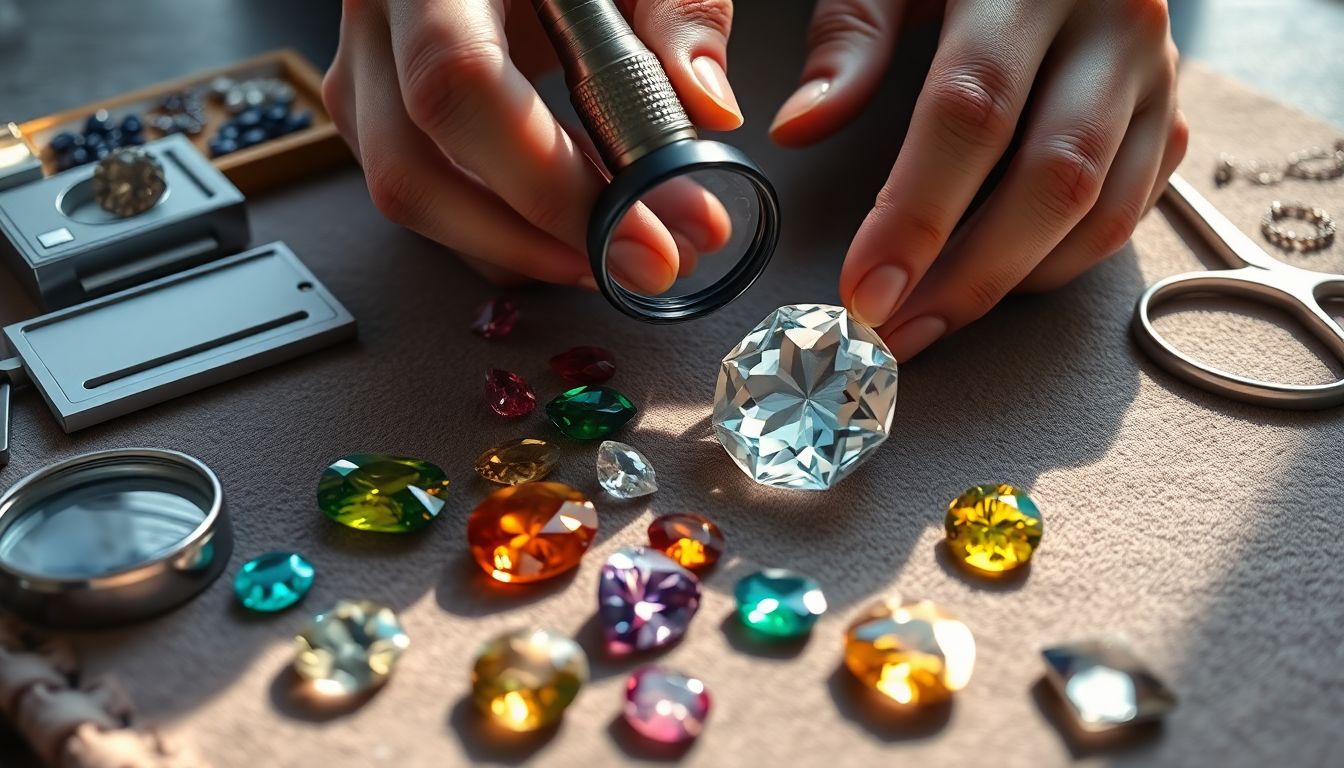
How to Identify Real Gemstones from Fake Ones Quickly at Home
Introduction
Knowing how to tell real gemstones from fake ones is useful. Whether you collect jewelry, invest money, or just want to be sure, it matters. Fake stones are more common than ever, making quick home checks essential. Luckily, you don't need fancy tools or a gemologist to get a good idea. With basic techniques, you can spot most fakes easily and save yourself time and money.
Understanding the Differences Between Real and Fake Gemstones
What Defines a Genuine Gemstone
Real gemstones are natural or carefully crafted to mimic nature. Natural stones form underground over millions of years. Synthetic gems are man-made but are genuine in composition. Imitation stones are simply made to look like real ones but aren't made of the same stuff.
Authentic gems are rare, valuable, and unique. They are composed of specific minerals and have a certain weight and clarity. Their origin, whether mined or lab-created, affects their price and worth.
Common Types of Fake or Imitation Gems
Fake stones include glass, plastic, and resin. These often look shiny but lack the depth of real gems. Common synthetic gems like cubic zirconia or moissanite are made in labs. They can be tricky to tell apart from real ones at first glance.
Visual and physical differences can help. Fake stones might look too perfect, have bubbles or surface flaws, or feel lighter than they should.
Visual Inspection Techniques for Identifying Real Gemstones
Examining Clarity, Color, and Cut
Check for natural inclusions — tiny flaws within the gem like feathering or mineral specks. Fake stones tend to be flawless or overly perfect. Real gems usually show some imperfections.
Look at color saturation. Fake stones often appear too uniform or overly intense. Also, observe the cut; a well-cut gem will reflect light evenly. Uneven or rough edges might suggest a fake.
Checking for Surface Flaws and Bubbles
Bubbles or tiny air holes are common in glass or plastic fakes. Use a magnifying glass or jeweler’s loupe (10x magnification) to spot these flaws.
Inspect for surface scratches or chips. Real stones are tougher and less likely to chip easily. Fake stones may have visible surface defects or scratches from handling.
Observing the Weight and Size
Real gemstones are dense. That means they usually weigh more than fake ones of the same size. Use a small, precise digital scale if you have one.
Compare the weight with similar-sized genuine stones or reference guides. If it feels too light, it might be fake.
Testing Physical and Optical Properties at Home
Hardness Test (Mohs Scale)
Every gemstone has a hardness score. For example, sapphires and rubies rank high, while glass scores lower.
Try scratching your stone lightly on a piece of glass or a ceramic plate. Fake stones like plastic or resin will scratch easily, while genuine sapphires won't. Be careful not to damage the stone if you want to keep it intact.
Refractivity and Light Reflection
Natural gems sparkle due to their internal structure. Hold the stone under light and observe its brilliance. Fake stones often lack the fire or dispersion seen in real gems.
Bubbles in fake glass can be spotted as tiny dots. A quick water test involves placing a drop of water on the stone. If it beads up and slides around, the stone has good refractivity, hinting at authenticity.
Temperature Conductivity Test
Real gemstones feel cool when touched, even in warm rooms. Fake stones heat up quickly. Rub the stone gently on your skin or use a thermal tester if you have one.
A cooler feel usually signals a real gem, but this test alone isn’t definitive.
Advanced DIY Testing Methods
UV Light Test
Many gemstones fluoresce under UV light. Turn on a small UV flashlight in a dark room and shine it on your gem. Some stones glow bright, while others do not.
For example, diamonds often glow blue, while moissanite may glow green or yellow. Be aware that some stones don’t fluoresce at all.
Checking for Inclusions with Simple Tools
Use a high-quality magnifier or small microscope to spot natural features inside the stone. Look for needles, tiny mineral flakes, or other inclusions.
Sapphires naturally contain rutile needles. If you see these, it’s a good sign of a real sapphire.
Using a Polarized Lens
Wearing polarized glasses or using a polarized filter can reveal how light passes through the stone. Many real gems show double refraction or birefringence when viewed through polarized lenses.
If the stone appears doubled or changes color, chances are it's genuine.
Consulting Experts and Further Validation
When you’re still unsure, it’s best to seek a professional appraisal. Trusted gem labs can provide official reports. Look for signs that warrant professional testing, like inconsistent appearance or very high value.
Combining at-home tests with expert input gives the best chance of accuracy.
Conclusion
Quickly telling real from fake gemstones is doable with simple tools and careful observation. Visual clues, weight, hardness, and optical tests give you a good starting point. Use a magnifier, water, UV light, and a scale for best results. When in doubt, always check with a professional gemologist. Protect your jewelry investment and personal collection by knowing what to look for.
Key Takeaways
- Basic visual tests, weight, and optical clues help spot fakes.
- Simple tools like a magnifier, water, and UV light are highly useful.
- Never rely on just one test; combine multiple for better accuracy.
- Consult a professional for final verification on valuable or uncertain stones.
Keep these tips in mind, and you'll become confident in identifying real gemstones quickly at home. Protect your jewelry and enjoy knowing you made the right call!